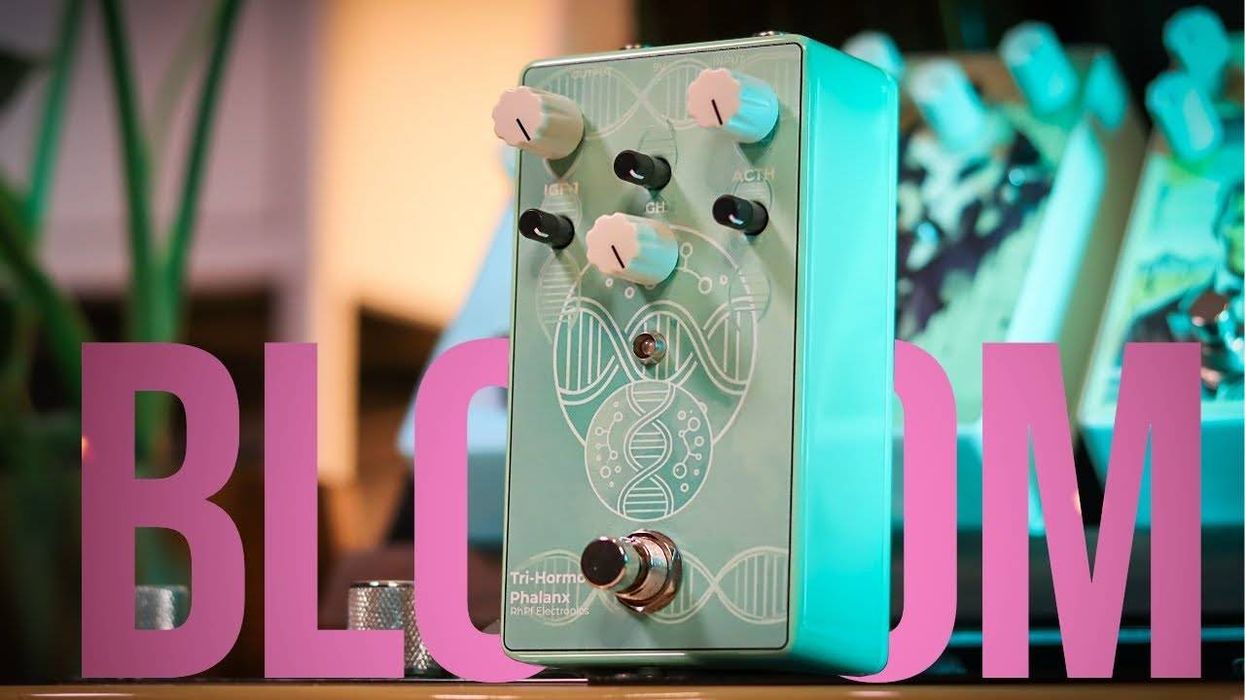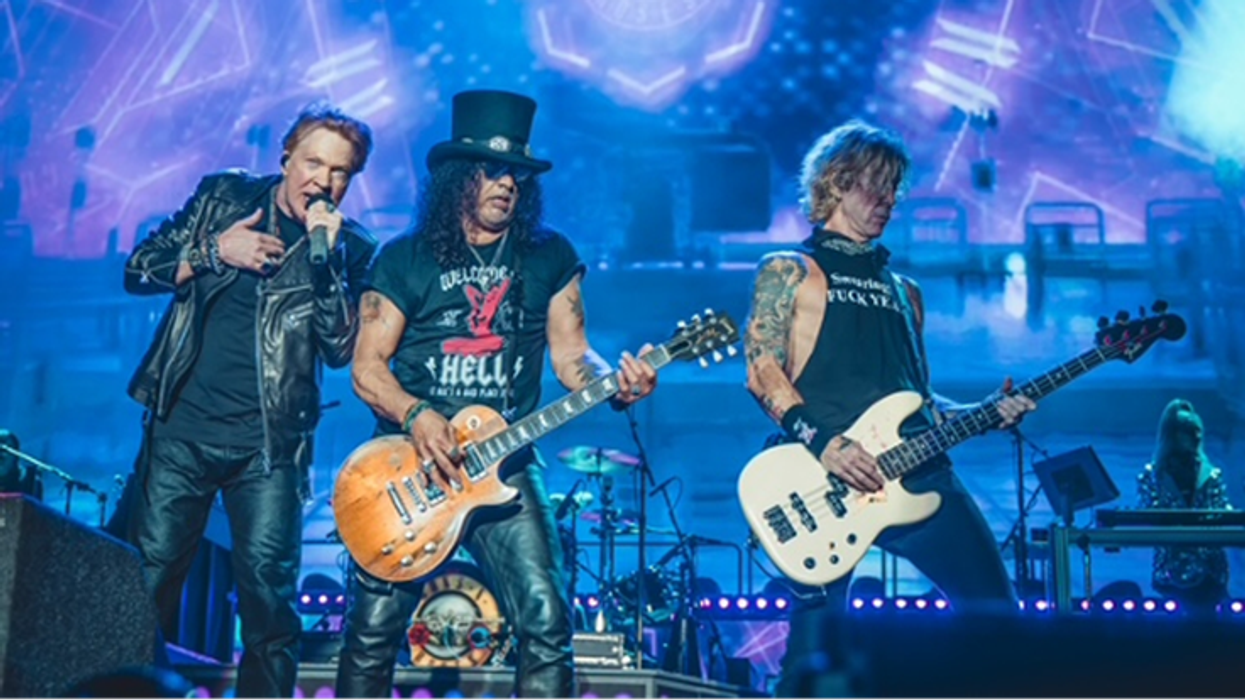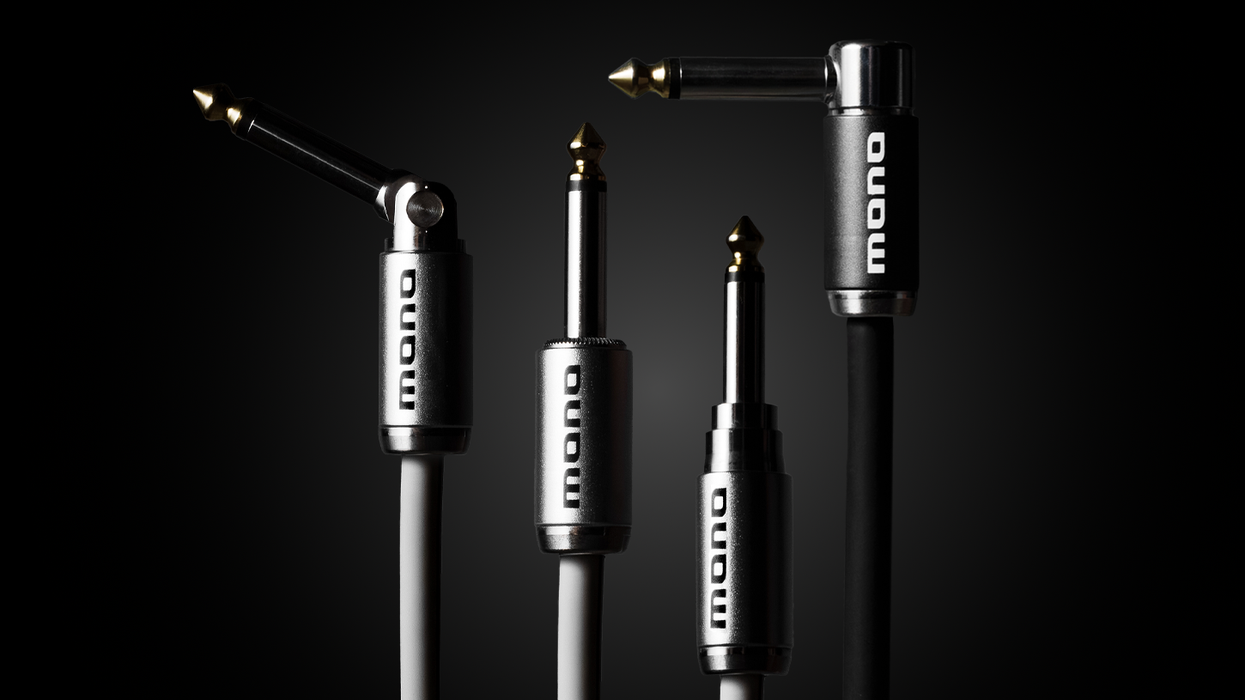Chops: Intermediate
Theory: Beginner
Lesson Overview:
•Understand and dissect different
elements of a drum groove.
• Create funky and percussive
guitar riffs.
• Simultaneously play in several
different registers to simulate
different instruments.
Rhythm guitarists can benefit from being aware of what the drummer is doing. A great way to dive into this world is to study drum patterns. With the availability of transcriptions all over the internet, it has never been easier to get inside the mind of a funky drummer. There are usually three parts to a drum pattern: kick, snare, and hi-hat. Each instrument occupies its own sonic space—think low, medium, and high—and these parts can easily translate to the guitar as bass, chords, and melody. By combining these elements, you can create interesting composite rhythms, and in this lesson we are going to look at a few examples.
The starting point will be a pattern similar to Clyde Stubblefield’s classic “Funky Drummer” beat shown in Fig. 1. Reading drum notation is pretty similar to standard notation. The lowest notes are the bass drum, the middle notes represent the snare drum and the Xs along the top are for the hi-hat. An open hi-hat is marked with a circle. As you can see, there is a lot going on here. It’s highly syncopated and very busy. The driving pulse is based on a 16th-note groove and provides the grid in which you can line up the hits and accents provided by the snare. When you craft a guitar part based on something like this, typically you’re going to choose much simpler patterns that either double or play off of what is already happening. However, in this lesson we will play more of the parts in order to really assimilate the funky drummer groove.

Often guitarists think in terms of rhythm or lead parts. This can be limiting, and one of the ways around this limitation is to listen to other instruments and simulate some of their characteristics. This is what most solo performers do, especially pianists. If you check out some old-school jazz pianists like Earl “Fatha” Hines, they are definitely thinking about playing like a band. They’re playing the bass, rhythm guitar, melody, and background parts at the same time.
Let’s start by looking at just the kick and snare parts. In Fig. 2 we use a single bass note for the kick drum and some chord stabs for the snare. This example is the composite rhythm of the drum groove condensed down to two parts.
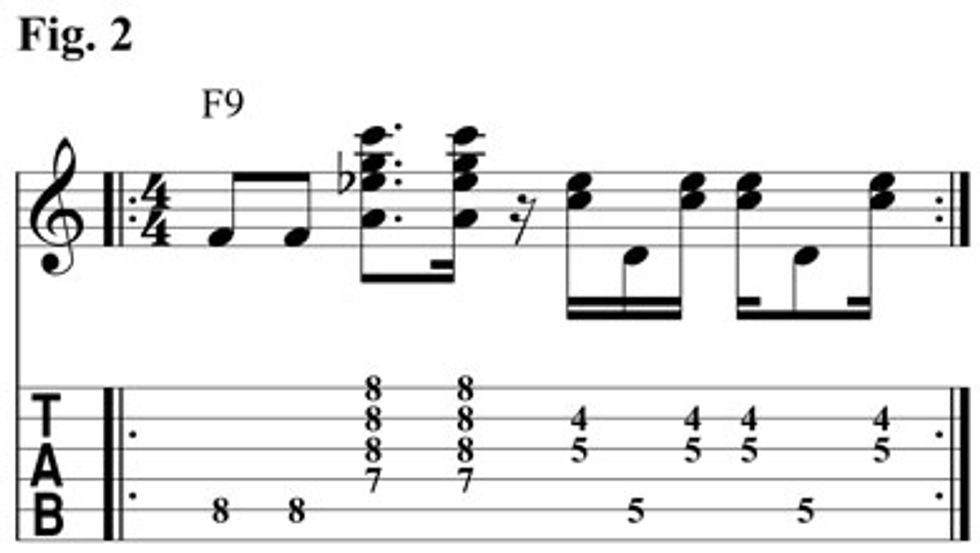
In Fig. 3 we add a muted percussive sound that will give us the feel of the 16th-note pattern originally played on the hi-hats. It’s possible to add this feel to any rhythm part. Nonpitched sounds are an essential part of the rhythm guitar vocabulary and can be achieved by maintaining steady up and down strokes while muting the notes you aren’t playing. We can further embellish the basic pattern with Fig. 4, which adds a little more melodic movement to the basic 16th-note chordal pattern.
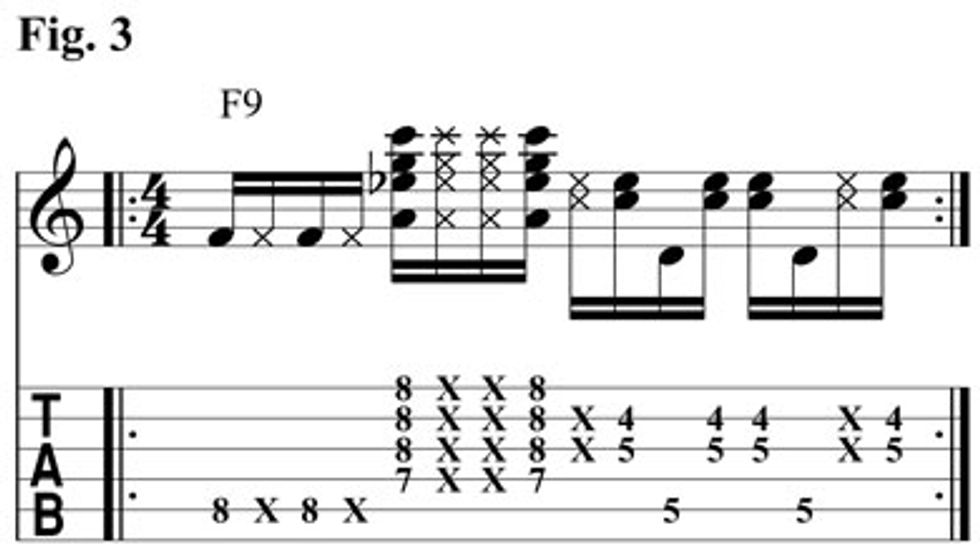
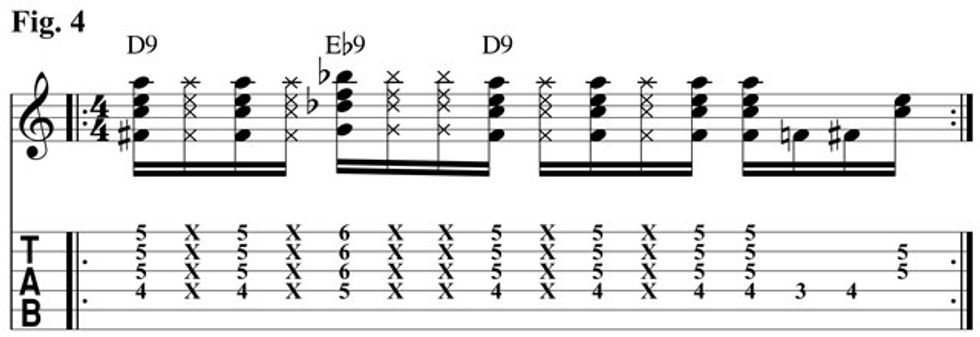
Leo Nocentelli, the Meters’ guitarist, had a huge influence on me with his unique approach to playing melody and rhythm. Both Fig. 5 and Fig. 6 demonstrate how to combine melodic fragments to create a moving and funky groove. This is one of the keys to adding variety to funk guitar parts. Try to imitate a horn section or a combination of different instruments playing in different registers. Leo calls this a “layering technique,” in which you play in several registers to simulate different instruments playing at the same time.
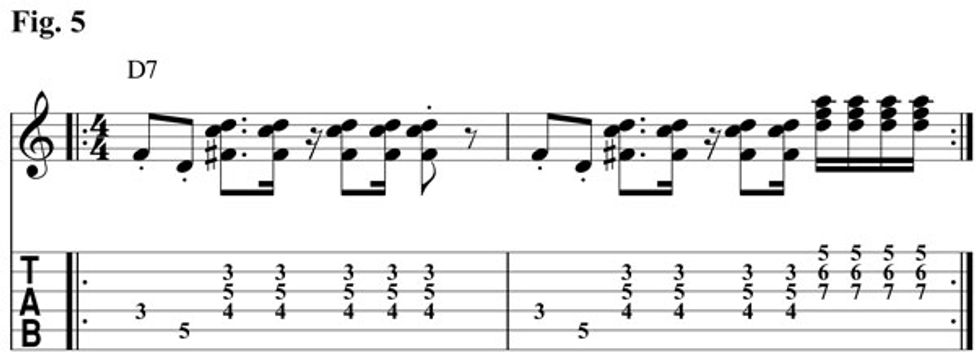
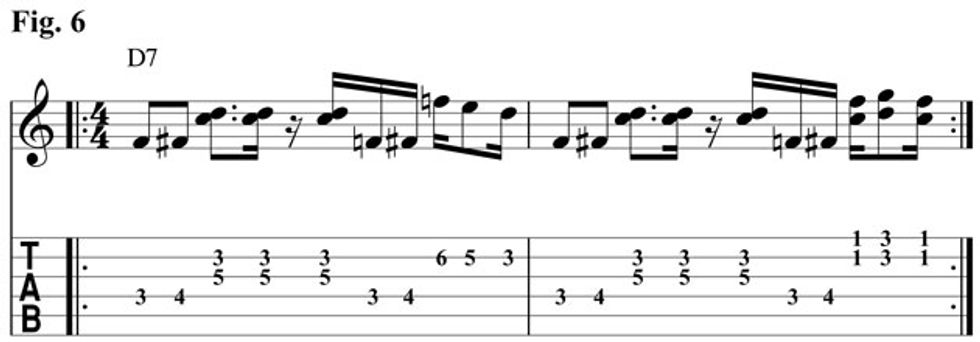
We move back to the bare-bones kick and snare pattern in Fig. 7, but add an African twist. Try playing it with the picking hand muting the strings. You can also try changing the notes you play while keeping the same rhythmic pattern.
A different harmonic element appears in Fig. 8, the D Phrygian mode (D–E♭–F–G– A–B♭–C). You can think of this scale in two ways: either a Bb major scale starting on D or a minor scale with a lowered 2, 6, and 7. It gives a jazzier, exotic feel to the harmony. Also notice that the chords are built on fourths, which is a staple of modal jazz harmony.
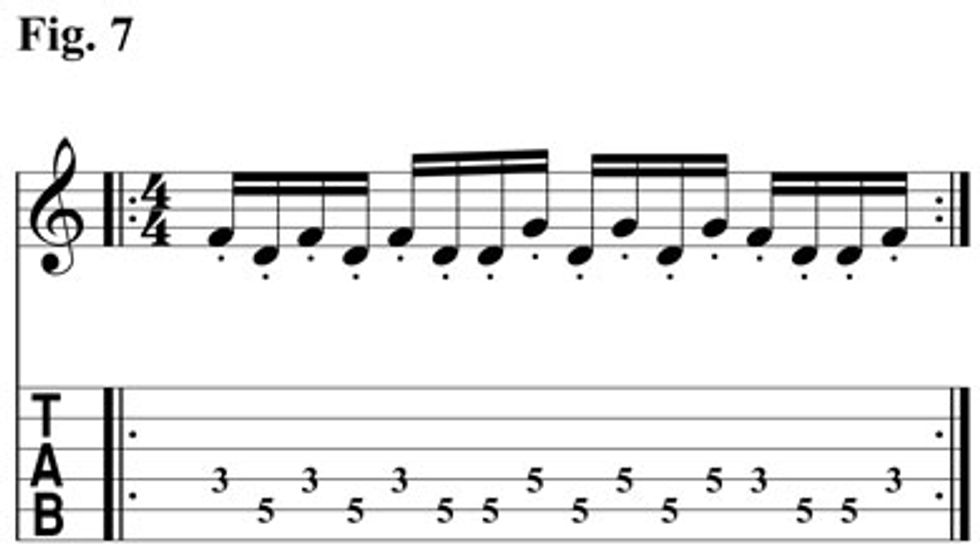
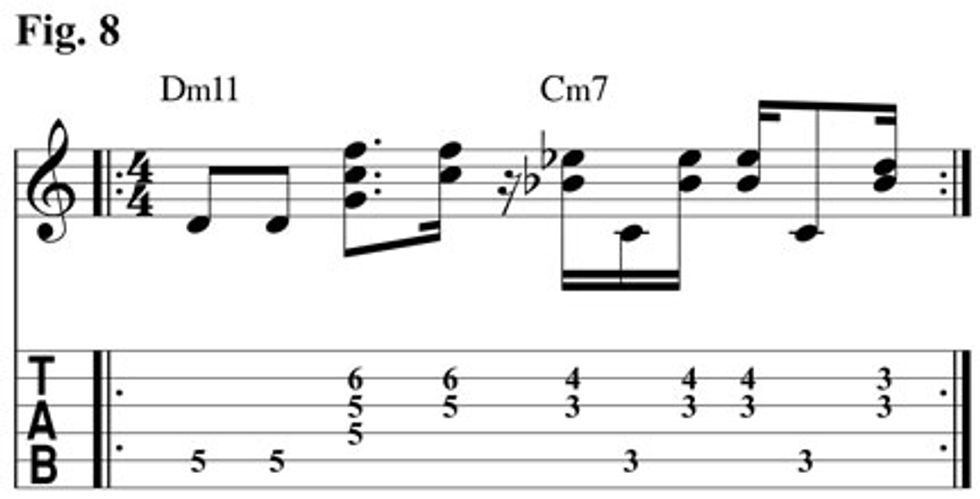
As you can see, we are basically turning the guitar into a melodic drum, and by studying patterns such as these you can open up a whole new world of cohesive rhythmic playing. This study will also give you more of an awareness of how to lock in with your rhythm section. Next time you play with a drummer or a drum track, practice playing along using the hi-hat as the subdivided pulse and try to mimic the snare and kick patterns to work on developing your rhythmic sync.
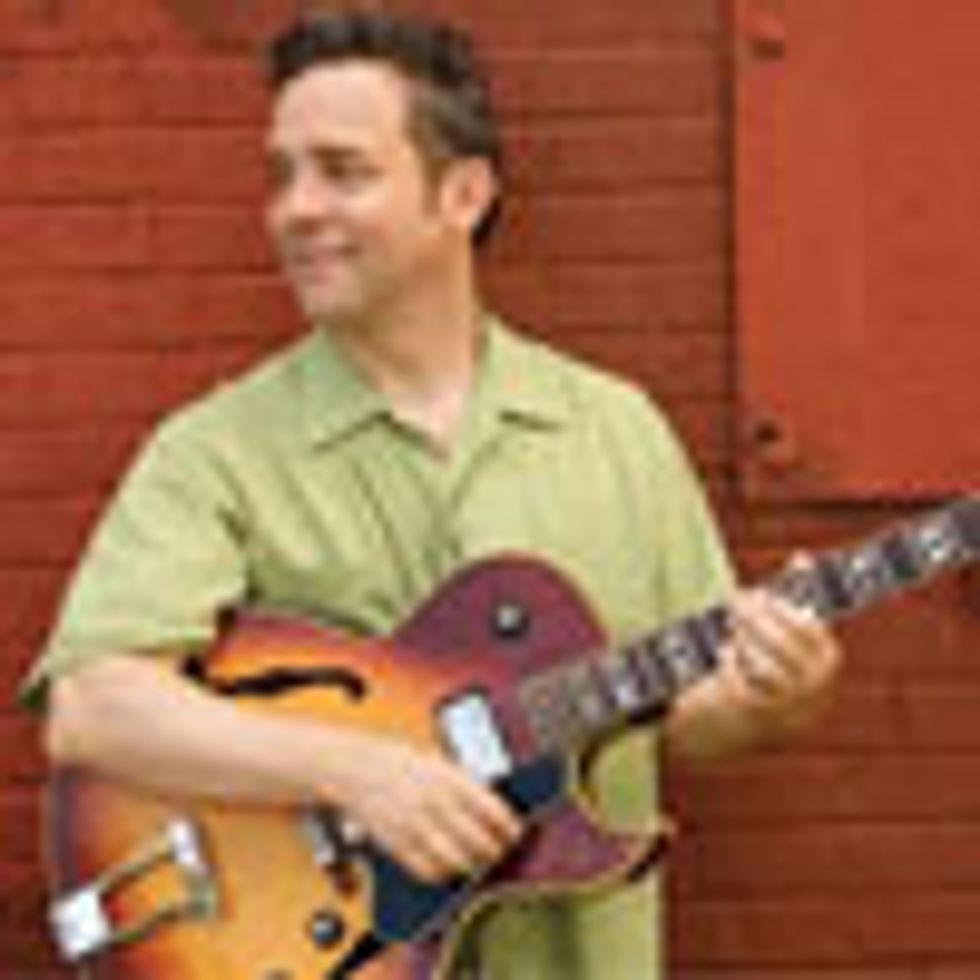 Will Bernard has played in a host of boundary stretching
groups, performing jazz, hip-hop,
world, and experimental music with many stops
in between. As a touring artist, Bernard has
been gaining steady momentum, performing in
his own band or as a member of the Stanton
Moore Trio, Robert Walter’s 20th Congress,
Groundation, and other lineups. His forthcoming
album, Outdoor Living will be released soon.
For more information, visit willbernard.com.
Will Bernard has played in a host of boundary stretching
groups, performing jazz, hip-hop,
world, and experimental music with many stops
in between. As a touring artist, Bernard has
been gaining steady momentum, performing in
his own band or as a member of the Stanton
Moore Trio, Robert Walter’s 20th Congress,
Groundation, and other lineups. His forthcoming
album, Outdoor Living will be released soon.
For more information, visit willbernard.com.